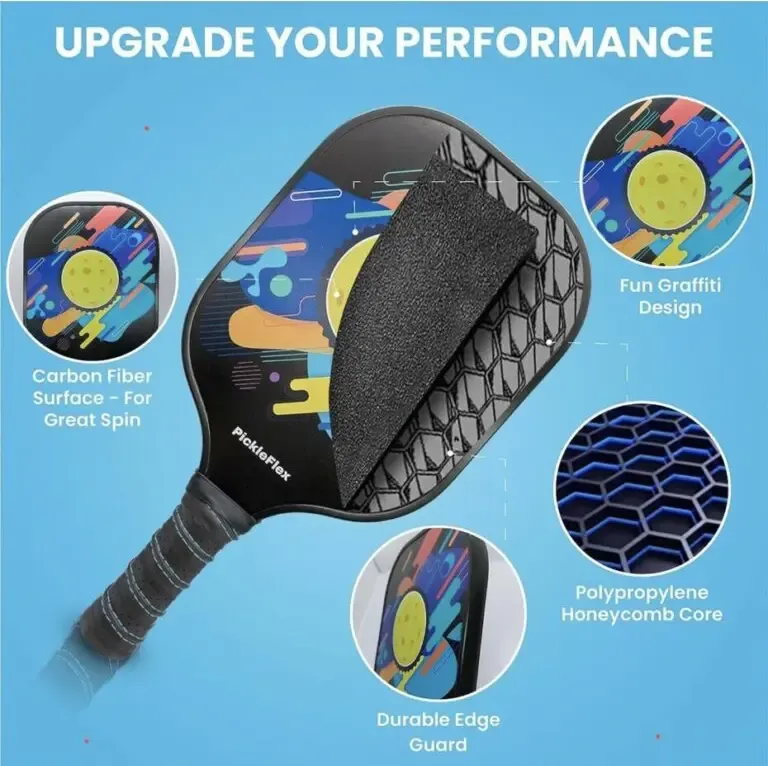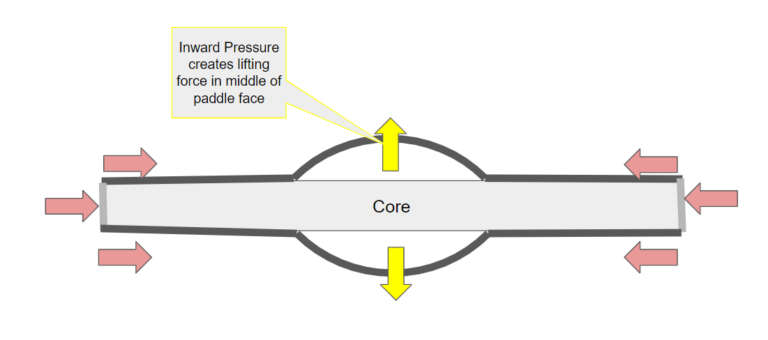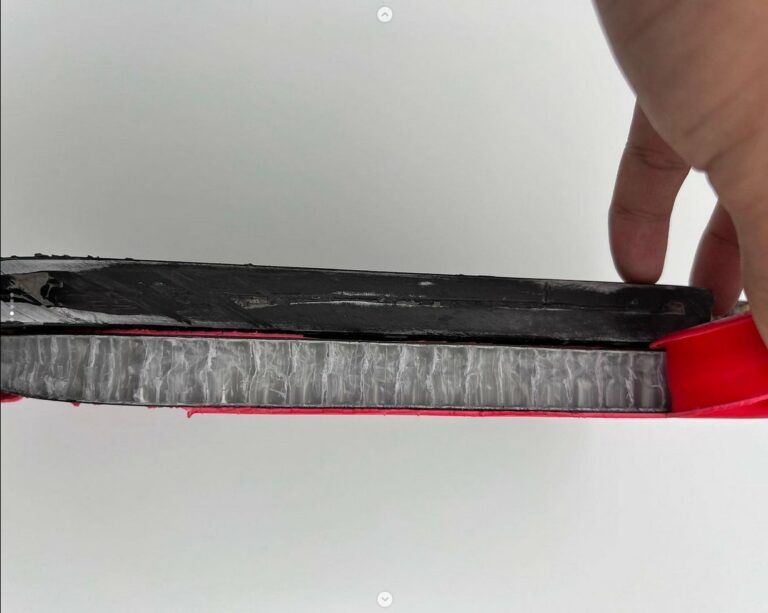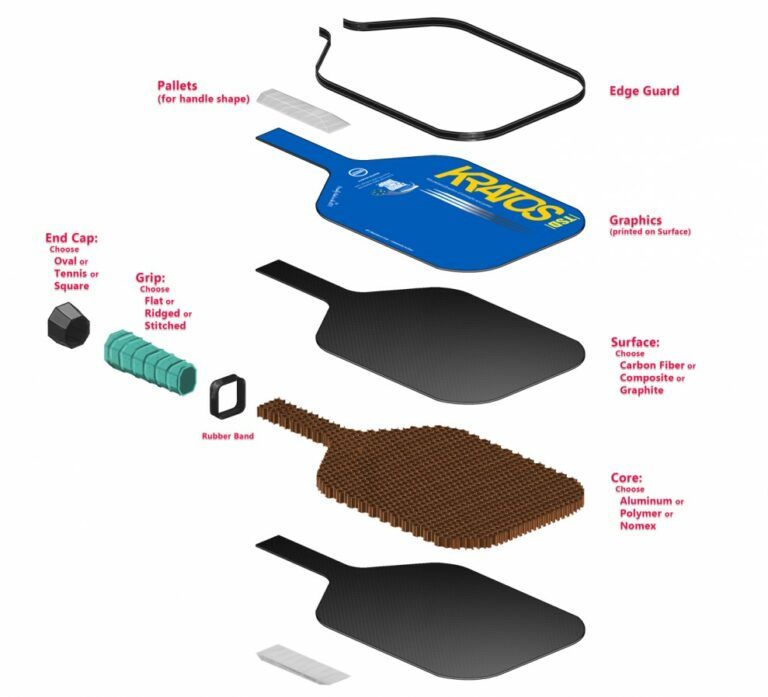What is a delaminated pickleball paddle?
A pickleball paddle is a well-crafted piece of equipment, typically made from various materials layered together for optimal performance. The anatomy of a paddle generally comprises three fundamental components: the core, the face, and the edge guard. The core serves as the foundation, often constructed from materials like polymer, Nomex, or wood, providing necessary stability. The outer face, made from fiberglass, carbon fiber, or composite materials, is designed for optimal ball interaction, while the edge guard protects against dings and impacts.
Delamination occurs when the layers of a pickleball paddle begin to separate a process that can be likened to the peeling of an onion, only less fragrant and far more detrimental to one's game. This failure can manifest through various complications, including:
- Disbonding: The adhesive that holds the layers together fails, leading to noticeable gaps.
- Core Corruption: The core itself may suffer structural issues, resulting in an overall decline in the paddle’s integrity.
Understanding these types of failures is crucial for players who want to maintain their equipment effectively.

Causes of delamination in pickleball paddles
Delamination is not merely a random occurrence; it stems from several factors that players should be aware of. One of the predominant causes is manufacturing defects, which can include poor adhesion techniques or the use of low-quality adhesives. If a manufacturer cuts corners to save costs, the players ultimately bear the brunt of inferior products.
Environmental factors also play a significant role. Leaving a paddle exposed to extreme humidity or temperature changes can lead to adhesive breakdown, resulting in a compromised structure. Storing paddles in a hot car or exposing them to moisture can catalyze this deterioration.
Wear and tear from regular use further exacerbates delamination. Over time, repeated impacts during gameplay exert stress on the adhesive bonds, causing them to weaken. It is a common misconception that delamination primarily affects older paddles; in reality, even new paddles are susceptible if they are exposed to harsh conditions or mishandling.
To prevent these issues, a conscious effort must be made to consider both care practices and the quality of the paddle being purchased.

Recognizing the signs of a delaminated paddle
Early identification of paddle delamination can save you from costly replacements and subpar gameplay experiences. The first step is a visual inspection look for signs such as bubbling, gaps, or peeling edges. If the surface appears uneven or shows distortions, the paddle might be on the verge of delamination.
Another useful method is conducting the sound test. Tapping the paddle should produce a consistent, solid sound. If you notice a hollow or dull thud, it may indicate that layers have started to separate.
Performance changes during play often underscore the presence of delamination. Players may experience unexpected shifts in power, often termed the "trampoline effect," where increased ball speed is misleadingly coupled with decreased control. This inconsistency can lead to frustrating gameplay experiences and diminish one’s competitive edge on the court.

The impact of delamination: why it matters
The implications of using a delaminated paddle stretch far beyond just aesthetics. Initially, players may revel in the perceived boost in power, but ultimately, this comes at a cost. The double-edged sword of power can lead to unpredictable shot placements and a loss of finesse, compromising a player’s overall game strategy.
Furthermore, the safety hazards involved cannot be understated. Should a paddle break during a game, it poses risks not only to the player wielding the damaged equipment but also to their opponents. High ball speeds coupled with potential paddle failure can result in serious injuries an overlooked aspect that highlights why player safety should always be prioritized.
The ethical implications of knowingly using a damaged paddle in competitive play are also important. Adherence to USAPA regulations reminds players of their responsibility to engage in fair play. The integrity of the game relies on each participant's commitment to maintaining their equipment in an optimal state.

Preventing delamination: protecting your investment
Preventing delamination hinges primarily on attentive paddle care and maintenance. By implementing specific, actionable practices such as storing paddles in a controlled environment away from humidity and extreme temperatures players can significantly reduce the likelihood of damage.
Handling your paddle with care is equally crucial. Avoid hard surfaces and colliding with other paddles during training sessions or matches. Reinforcing these precautions ensures a longer lifespan for your equipment, allowing you to focus on honing your skills rather than worrying about potential malfunctions.
Choosing high-quality paddles from reputable brands can also be a game-changer. Invest in paddles constructed with durable materials and proven manufacturing processes. Quality assures players that their equipment is built to withstand wear and tear, creating a robust barrier against delamination.
Repairing a delaminated pickleball paddle: is it possible?
Should a paddle show signs of delamination, players may wonder whether repair is feasible. Assessing the damage is key; if delamination is superficial, it might be possible to restore it using epoxy and clamps. However, this requires careful execution and a degree of know-how to ensure effectiveness without further damaging the paddle.
Professional repair options might present a more reliable avenue for addressing severe delamination. While this route may involve costs, the expertise provided could potentially extend the life of the paddle significantly. Weighing the pros and cons of DIY versus professional repair can help you make informed decisions.
It's also essential to take the paddle's condition into account when deciding on repairs. If the damage is extensive, investing in a new paddle may be the more practical long-term solution.
Pickleball paddle regulations
The USAPA, or USA Pickleball Association, plays a pivotal role in establishing standards and testing procedures designed to ensure fairness in play. These guidelines are essential for the professional realm, where even the smallest advantage can sway the outcome of a match.
Testing procedures help to affirm that paddles adhere to minima outlined by the organization, creating a level playing field for all participants. However, the enforcement of these standards can be tricky, especially in amateur play. It relies heavily on players' awareness and self-policing tendencies, charging them with the responsibility for their equipment’s condition.
In essence, these regulations maximize safety and performance, underscoring the importance of maintaining paddles to the highest standard.
The future of pickleball paddles
Manufacturers are acutely aware of delamination issues and are actively engaged in a quest to develop new materials and adhesives that will extend the lifespan of their paddles. Innovations in manufacturing processes can lead to robust designs that resist delamination. Research and development efforts continue to make strides in this arena, providing hope for players who wish to minimize equipment-related failures.
While enhancing performance characteristics such as power and spin are priorities, manufacturers strive to achieve a delicate balance with durability. As techniques and materials evolve, players can look forward to paddles that not only elevate their game but also withstand the rigors of gameplay.
Choosing your ideal pickleball paddle
When it comes to purchasing a paddle, several factors must be considered. Material choice plays a key role in durability; higher-quality materials often translate to a longer lifespan. Core type is just as significant; selecting between polymer, Nomex, or wood can affect power and control on the court.
Additionally, factors such as paddle weight and grip size can greatly influence your performance. A well-balanced paddle that fits your personal preferences is paramount for maximizing your effectiveness during play.
For those overwhelmed with the multitude of options, seeking reliable reviews and resources can help streamline the selection process. Trusted websites, forums, and even YouTube channels dedicated to pickleball can offer insights and comparisons to ensure you make an informed choice.
Conclusion
Navigating the world of pickleball paddles and understanding issues related to delamination is a journey every player must undertake. From recognizing the signs and mitigating risks through consistent paddle care to embracing innovations emerging from manufacturers, players can take control of their experience on the court. Investing the time and effort into understanding this aspect of paddle maintenance ultimately leads to improved play and, most importantly, safety. By remaining vigilant and informed, pickleball enthusiasts can safeguard their equipment and enjoy the dynamic game that continues to captivate players across the globe.










